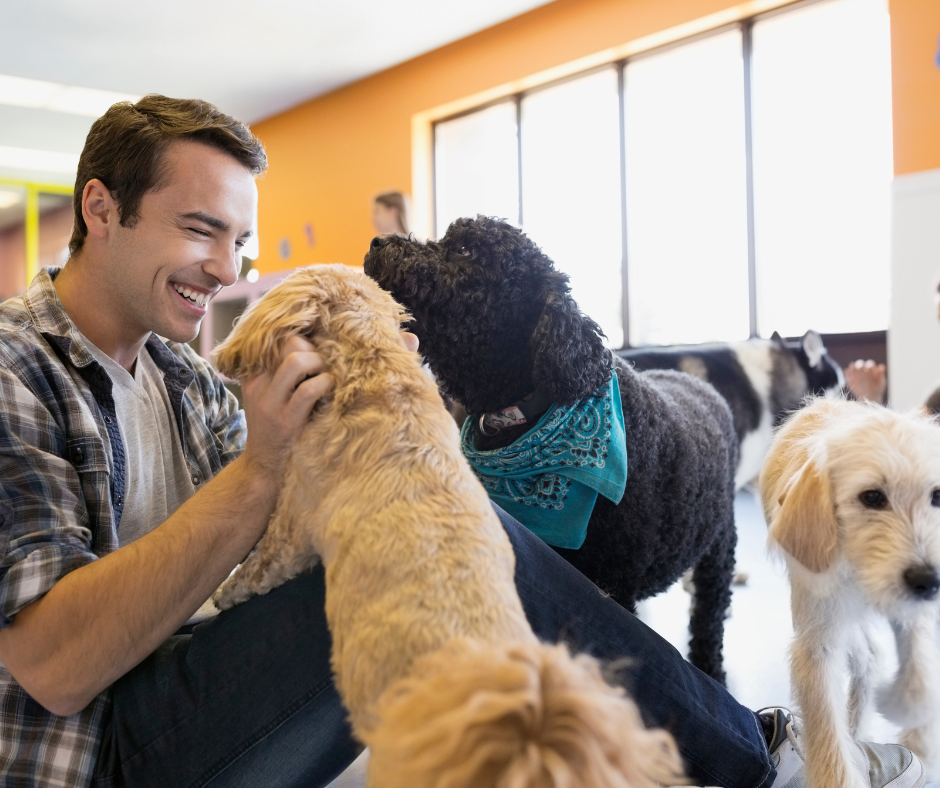
Socializing your dog is a crucial aspect of their upbringing, helping them become well-adjusted, confident, and friendly companions. Whether you have a puppy or an adult dog, exposing them to various experiences, people, and animals is essential for their mental and emotional development. In this guide, we’ll explore techniques for socializing your dog with other pets and people, ensuring they become happy and sociable members of the community.
1. Start Early
The earlier you start socializing your dog, the better. Puppies are most receptive to new experiences and environments between the ages of 3 and 12 weeks, so it’s essential to begin socialization during this critical period. Introduce your puppy to a wide range of people, including adults, children, and individuals wearing hats, glasses, or uniforms, to help them become comfortable with different appearances and behaviors.
2. Gradual Exposure
When socializing your dog, it’s crucial to expose them to new experiences gradually and at their own pace. Start with low-stress environments and gradually increase the level of difficulty as your dog becomes more comfortable. For example, begin by inviting a few trusted friends or family members to your home to interact with your dog before venturing out to busy parks or public spaces.
3. Positive Reinforcement
Use positive reinforcement techniques to encourage desirable behavior during socialization. Reward your dog with treats, praise, and affection when they interact calmly and positively with new people and animals. Positive reinforcement helps your dog associate social experiences with positive outcomes, making them more likely to repeat desirable behaviors in the future.

4. Controlled Introductions
When introducing your dog to new people or animals, keep the interactions controlled and supervised to ensure safety and prevent overwhelm. Use a leash or harness to maintain control of your dog’s movements and intervene if necessary. Allow your dog to approach new people or animals at their own pace, and be prepared to remove them from the situation if they become anxious or overwhelmed.
5. Enroll in Training Classes
Training classes provide an excellent opportunity for you to socialize your dog with other dogs and people in a structured environment. Look for reputable obedience classes or puppy socialization classes in your area that focus on positive reinforcement and reward-based training methods. Not only will your dog learn valuable obedience skills, but they’ll also have the chance to interact with other dogs and people under the guidance of a professional trainer.
6. Expose Your Dog to Different Environments
Expose your dog to a variety of environments, sounds, and stimuli to help them become adaptable and confident in different situations. Take your dog for walks in busy neighborhoods, visit pet-friendly stores, cafes, and parks, and expose them to different surfaces such as grass, concrete, and sand. Experiencing a variety of environments from an early age will help your dog feel more comfortable and confident in new surroundings as they grow older.
7. Be Patient and Consistent
Working to socialize your dog is a gradual process that requires patience, consistency, and dedication. Be patient with your dog as they adjust to new experiences and environments, and avoid pushing them beyond their comfort zone. Consistently expose your dog to socialization opportunities on a regular basis to reinforce positive behaviors and prevent regression. Remember, every dog is unique, so it’s essential to tailor your approach to your dog’s individual temperament and needs.
Socializing your dog is a lifelong journey that requires patience, consistency, and a proactive approach. By starting early, gradually exposing your dog to new experiences, using positive reinforcement techniques, enrolling in training classes, exposing them to different environments, and being patient and consistent, you can help your dog become a well-adjusted, confident, and sociable companion.
Remember, socialization is not just about teaching your dog to interact with other pets and people—it’s also about building their confidence, resilience, and adaptability, setting them up for a lifetime of happiness and success. So grab your leash, gather your treats, and embark on a pawsitively social journey with your furry friend!
FAQs
Socializing a dog means exposing them to various environments, people, animals, and situations in a positive way. This helps them become more confident, reduces fear and aggression, and promotes appropriate behavior.
Begin socializing your puppy as early as 3 to 14 weeks of age, as this is when they’re most receptive. For older dogs, it’s never too late to start, but the process may require more patience.
Start in controlled settings like puppy classes or small playdates with vaccinated dogs. Use positive reinforcement and gradually introduce your dog to new experiences, ensuring they are not overwhelmed.
Enroll your dog in puppy classes, go for walks in diverse environments, introduce them to a variety of people, and arrange playdates with friendly dogs. Always ensure experiences are positive and use treats and praise to reward good behavior.
